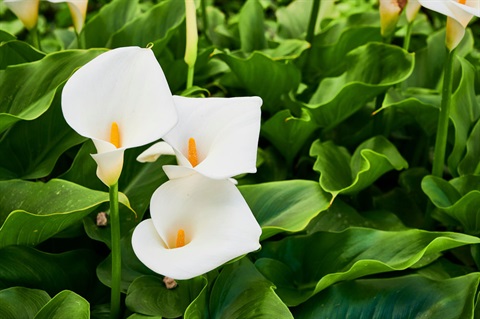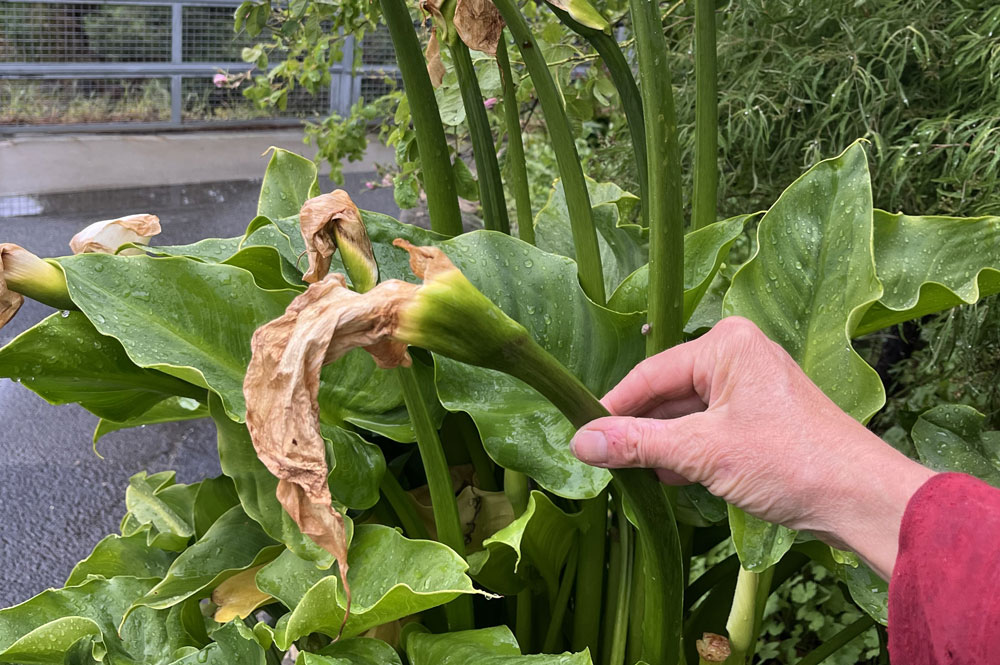
A silent contest is playing out in Hobart's waterways, with escaped garden plants moving downstream, and one of the worst is the alluring arum lily.
Extremely difficult to control in bushland and waterways, arum lily can create dense colonies that outcompete native plants. It is toxic to wildlife and humans and provides no habitat for native animals or insects. In extreme cases it can cause localised flooding.
Our dedicated Bushcare volunteers try to dig arum out of the ground, but it's very difficult - the plant's underground rhizome easily break off and regrow with renewed vigour.
We especially see arum lily on the Hobart Rivulet, Sandy Bay Rivulet, Maning Creek in McAulay Reserve and on the New Town Rivulet.
 Arum seeds develop inside old flower heads. Please remove the old flowers!
Arum seeds develop inside old flower heads. Please remove the old flowers!We need more weed warriors
The more people in Hobart who are aware of environmental weeds that harm our native bushlands and rivulets, the better chance we have of controlling them.
You can help our hardworking Bushcare volunteers control arum lily with these simple steps:
- If you see arum lily in late flower, usually in summer, please remove the old flower heads to prevent it spreading by seed. The seeds are like small marbles and form in the head of the mature arum flower.
- Remember to wear gloves, long sleeves and pants when handling arum as the sap can cause skin irritation. All parts of the plant are poisonous if eaten by animals.
- Don't disturb the soil around arum, you'll probably make it worse!
If you find a new, small arum seedling, and have the time and patience, carefully dig a trench or moat around it, so the plant is sitting up on a pedestal. Gently lift it out and into an open bag or bucket, without letting any rhizomes break off.
Other environmental weeds we need to keep out of waterways include red hot poker, agapanthus, blue periwinkle, Chilean rhubarb, hemlock, tutsan, stinking iris, sweet pittosporum and willow.
Help stop this garden escapee!
If you have arum lilies in your garden why not consider pulling them out and replacing them with a native plant?
You'll be doing your local native bees and other pollinators a favour, and helping to prevent arum lilies jumping your fence and invading local bushland.
The NRM South Native Gardens guide is a fantastic resource and recommends flaxlily as a good local native plant replacement for arum lilies.
Flaxlily is a small clumping plant to knee high that has beautiful dark green leaves, producing blue to purple flowers in spring. It's great for borders, large or small group plantings, pots and indoors.
Join Bushcare
It's easy to join the City of Hobart Bushcare program and be part of a growing movement of every day people working together to protect our precious bushlands and wildlife.
Learn more